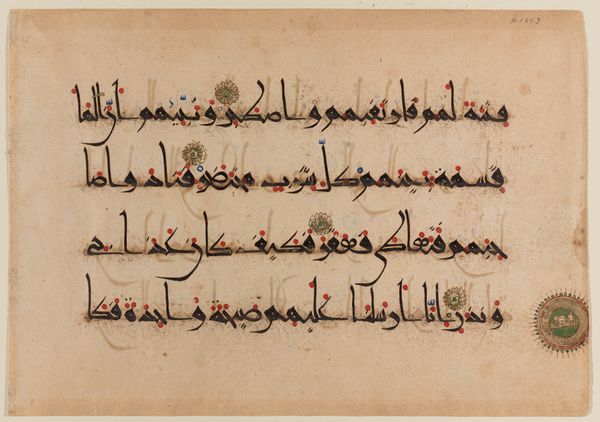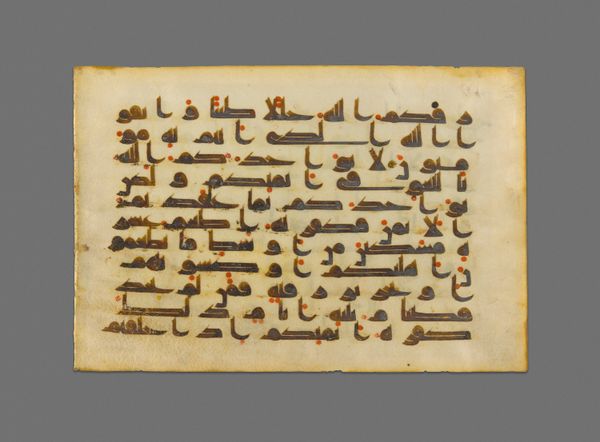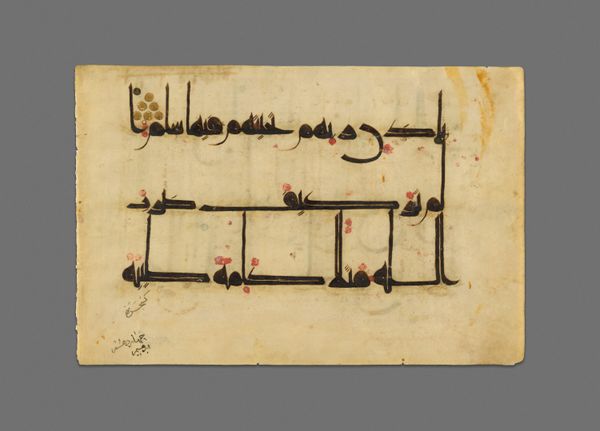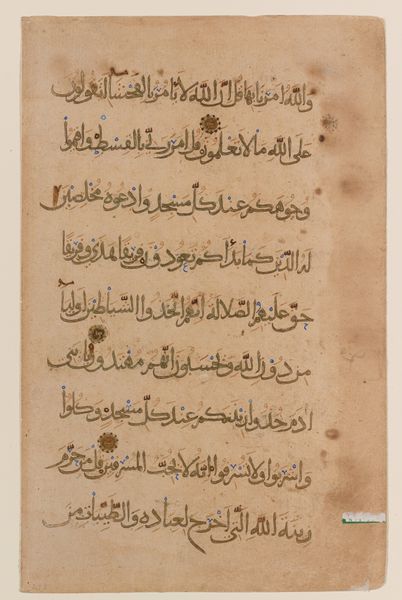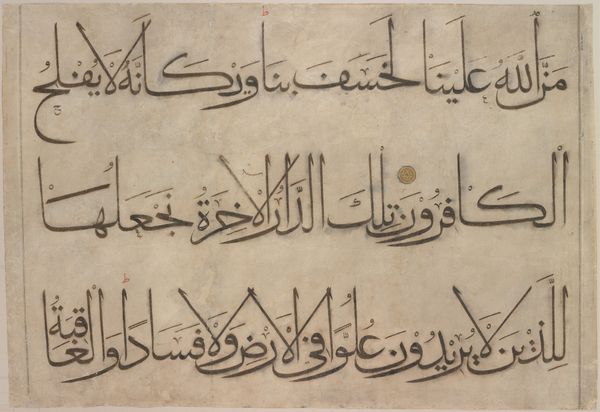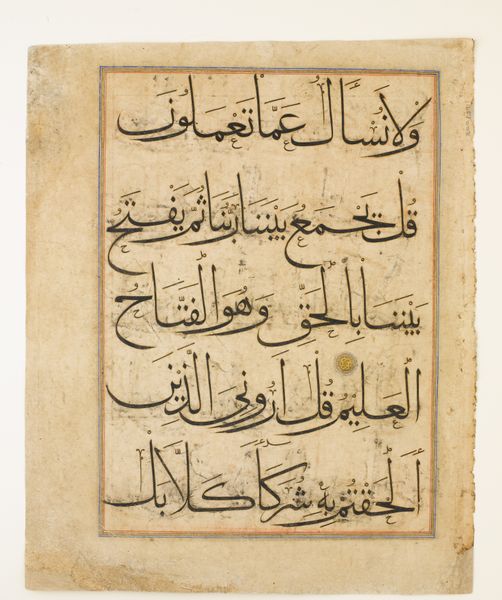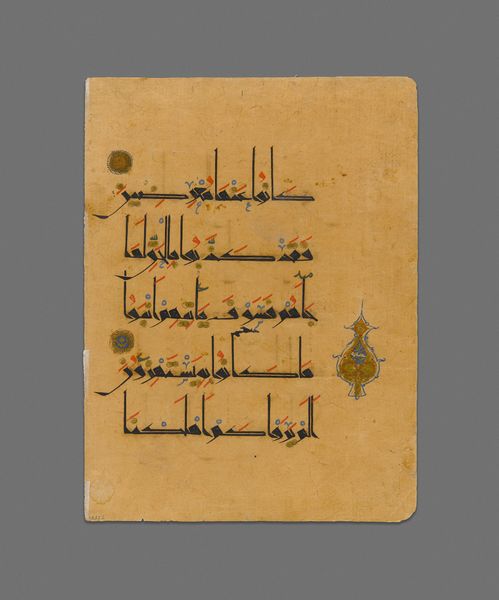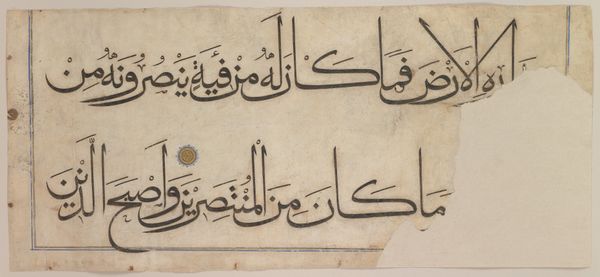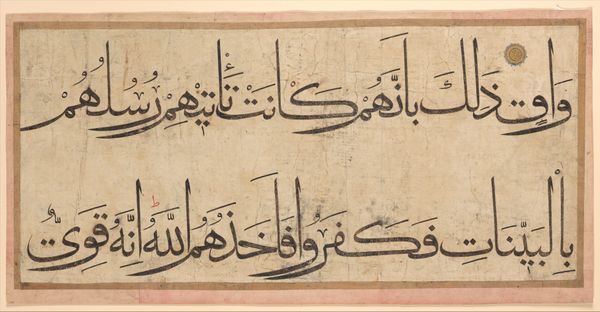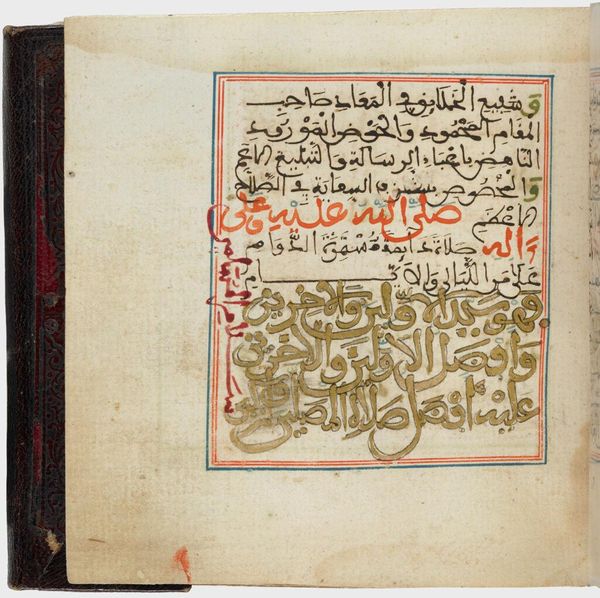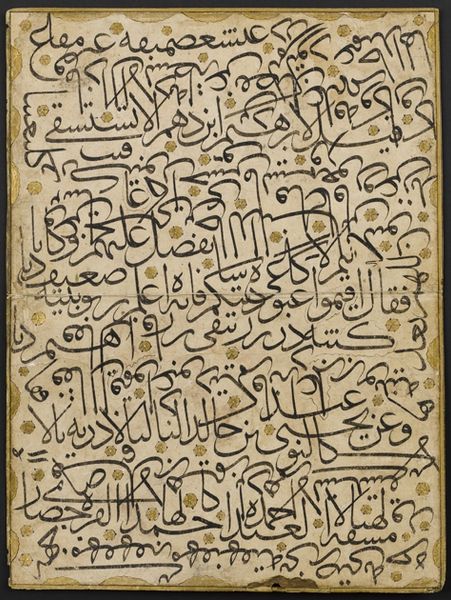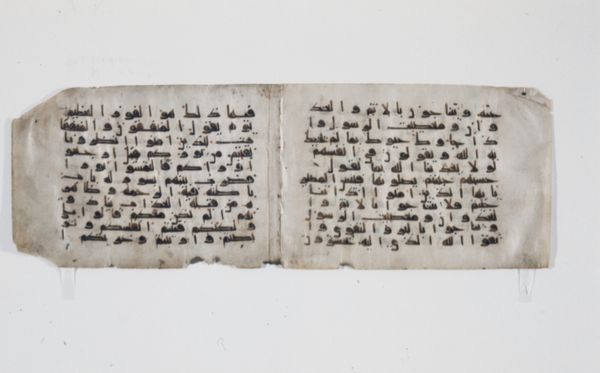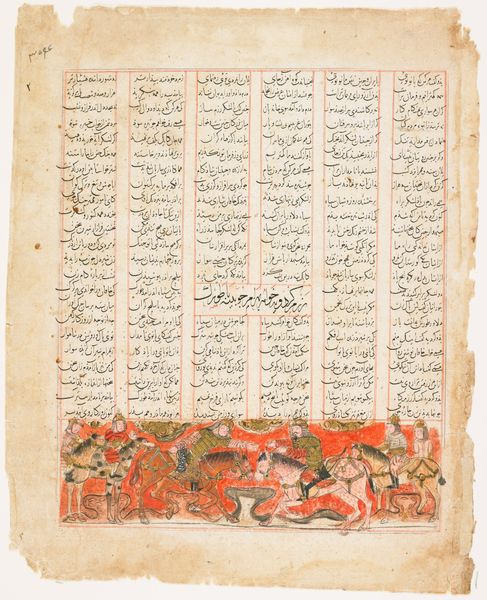
textile, ink
#
medieval
#
textile
#
ink
#
calligraphic
#
islamic-art
#
calligraphy
Dimensions: 9 5/8 x 13 1/8 in. (24.45 x 33.34 cm) (image, sheet)
Copyright: Public Domain
This is a page from the Koran, made anonymously, with ink, color, and gold on paper. The use of calligraphy in Islamic art transcends mere writing; it becomes a visual embodiment of spiritual and cultural values. Created in a region spanning from Spain to India, this page reflects the widespread influence of Islamic culture in that period. Calligraphy holds a revered position in Islamic art due to its direct connection to the divine word of Allah, as revealed in the Koran. The precise, flowing lines and intricate compositions are not simply decorative, they are meditations on the divine. To understand this page fully, we need to research the history of Islamic calligraphy, the social role of religious texts, and the patronage systems that supported its production. By doing so, we can better appreciate the complex interplay between art, religion, and society in the Islamic world.
Comments
minneapolisinstituteofart almost 2 years ago
⋮
The Qur’an, revealed by God to Muhammad through the archangel Jibril (Gabriel), according to the Muslim faith, was compiled into a single volume several decades after the prophet’s death in 632 CE. In subsequent centuries, copiers of the Qur’an developed a system of colorful pronunciation and punctuation marks that make it easier to read and understand. This beautiful page has only a few such signs, rendered here as red dots, so it is safe to assume that it was written very early on, possibly around 900 CE. The golden line in the middle is the title of the sura, or chapter, that follows: “The Rising of the Dead, Resurrection” (sura 75).
Join the conversation
Join millions of artists and users on Artera today and experience the ultimate creative platform.
